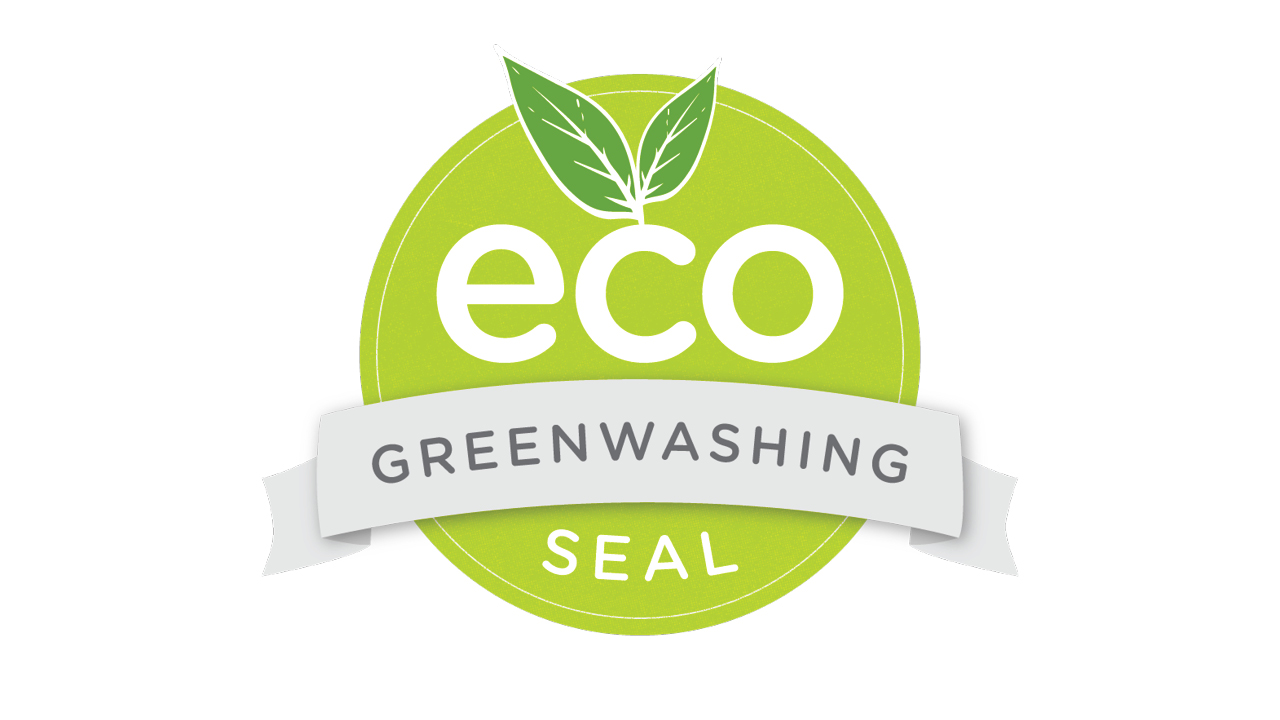
Happily, I have observed that there is a great deal of optimism and trust in the world. Most strangers truly are kind and wish us well. While I count myself among the trusting, there is one place that I need to be on my guard: the body care aisle of my local pharmacy.
Trust and deception fight it out on many a body care product label. Where there’s a market trend, there is always to be found a manufacturer preying on the unsuspecting, uninformed, or distracted shopper. Nowhere is this more prevalent than in product labeling. There are many labeling traps that will ensnare an unwary shopper—and their money—without overtly defying any labeling laws.
Let me lay out ten body care labeling traps for you:
1. Natural—Natural means NOTHING. I cannot stress this emphatically enough. There might as well be a blank space on the label. From the FDA’s own website: “FDA has not defined the term “natural” and has not established a regulatory definition for this term in cosmetic labeling.” “Natural” does not mean from nature, organic, good for you, or good for the environment. You need to read the ingredients instead of the claims.
2. Non-Toxic—While the Green Guides, a document issued by the Federal Trade Commission, defines non-toxic as needing “competent and reliable scientific evidence that the product is safe for both people and the environment,” there is no definition of the word “safe.” How constrained is the window of usage in which the product is indeed “safe”? You still need to read the ingredients.
3. Hypoallergenic—Again we assume this means devoid of common allergens, such as soy and corn. However, this term is not regulated, so even if it is missing one common allergen, it might still have another. And many people are allergic or at least sensitive to less common substances. The word “hypoallergenic” is no guarantee. Look at the ingredient list.
4. Non-comedogenic—This is trying to communicate that the product will not cause acne. However, again, it has no standard definition. Perhaps it is missing a certain pore-clogging substance but maybe not. The best bet for acne prevention is to eat a healthy diet, drink lots of water, get lots of sleep, exercise, and relax. Beyond that, acne has many causes and skin has many different reactions. Topical products are not a primary cause of acne. Know what ingredients work and don’t work for you and check for them. In general, our skin likes simplicity.
5. Biodegradable—This is another term that is regulated by the FTC’s Green Guides. However, you need to read the fine-print. Many consumer products are labeled prominently as “biodegradable,” but the fine print reveals that the product will only biodegrade in a very narrow window of situations. They are not biodegradable in a standard home type of composter, and even industrial composting refuses to accept “biodegradable” plastics. Read ingredients and learn about their biodegradability and environmental impact yourself.
6. XYZ-free—“Paraben-free” – “Phthalate-free” – “ GMO-free” – “Fragrance-free” – “Dye-free”—These are all well and good, but saying what is NOT in the product is not the same thing as saying what IS in the product. Read the ingredients.
7. Organic—Used either in the brand name or in the product name & without the USDA Organic Seal—The personal care industry is not regulated as strictly as the food industry regarding making an organic claim on a product. This means that any product can say “organic” but without the USDA Organic Seal, there is no verification. It looks like this: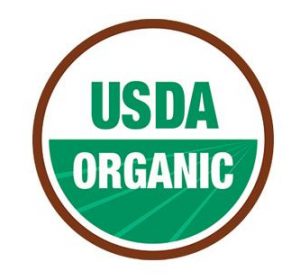
8. Pseudo-certification seals—Those authoritative little symbols seem to communicate so much good stuff! But if they aren’t backed by a solid organization, they are no more than pretty artwork. What do you think of this one created by our graphic designer Rachel Day?: 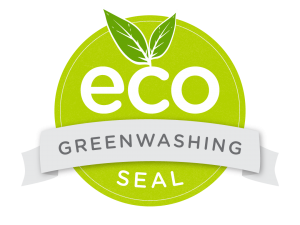
Know instead what genuine certification seals look like.
Green, white or matte coloring—Our personal color associations can lead us astray, and manufacturers know it. Green connotes life. White connotes purity. Matte connotes nature-friendly. This is purely a psychological tug. Nothing about the outside color of the bottle guarantees what is actually in the bottle. I could pour arsenic into a pretty green bottle and it still wouldn’t be good for you. Read the ingredients instead.
Leaves, bees, flowers or smiling suns—Again this is an emotional pull. It’s an attempt to convince the unwary shopper that the product is blessed by Mother Nature herself. They mean nothing. Look at what’s in the bottle.
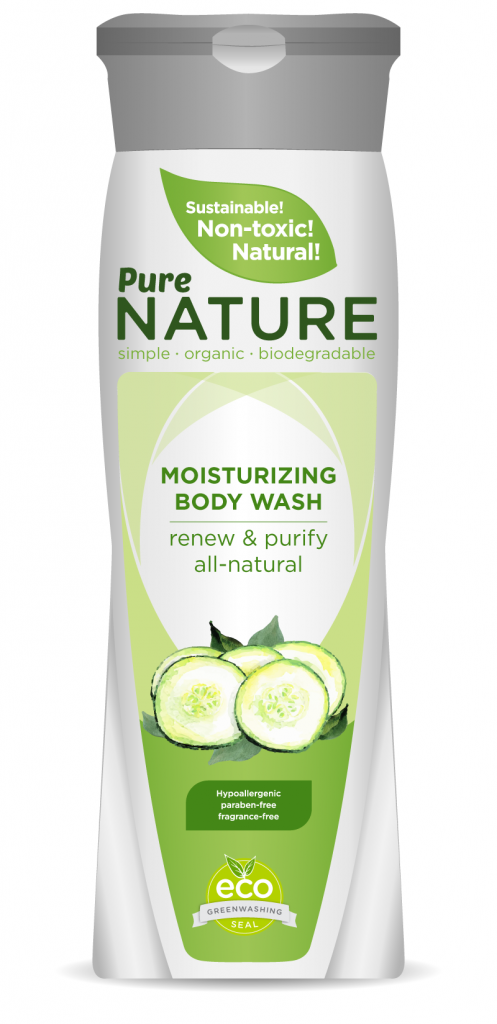
Are you detecting a theme here? There is no substitute for reading ingredients and finding out what they mean and how your body reacts to them.
So here’s a test. Check out this bottle pictured on the right. What does it say about what’s inside? Absolutely nothing. The bottle might as well be blank!(Bottle design by our awesome graphic designer Rachel Day.) By this point you’re probably a little bit irked by manipulative labeling practices. Instead of jumping up and down for someone else to do something about this, here’s what you can do:
- Read ingredients on the back label rather than claims on the front label.
- Study the Skin Deep Database to understand products and ingredients.
- Support activism and legislation to curb misleading labeling, such as the Campaign for Safe Cosmetics.
- And most importantly: Don’t buy cruddy products.







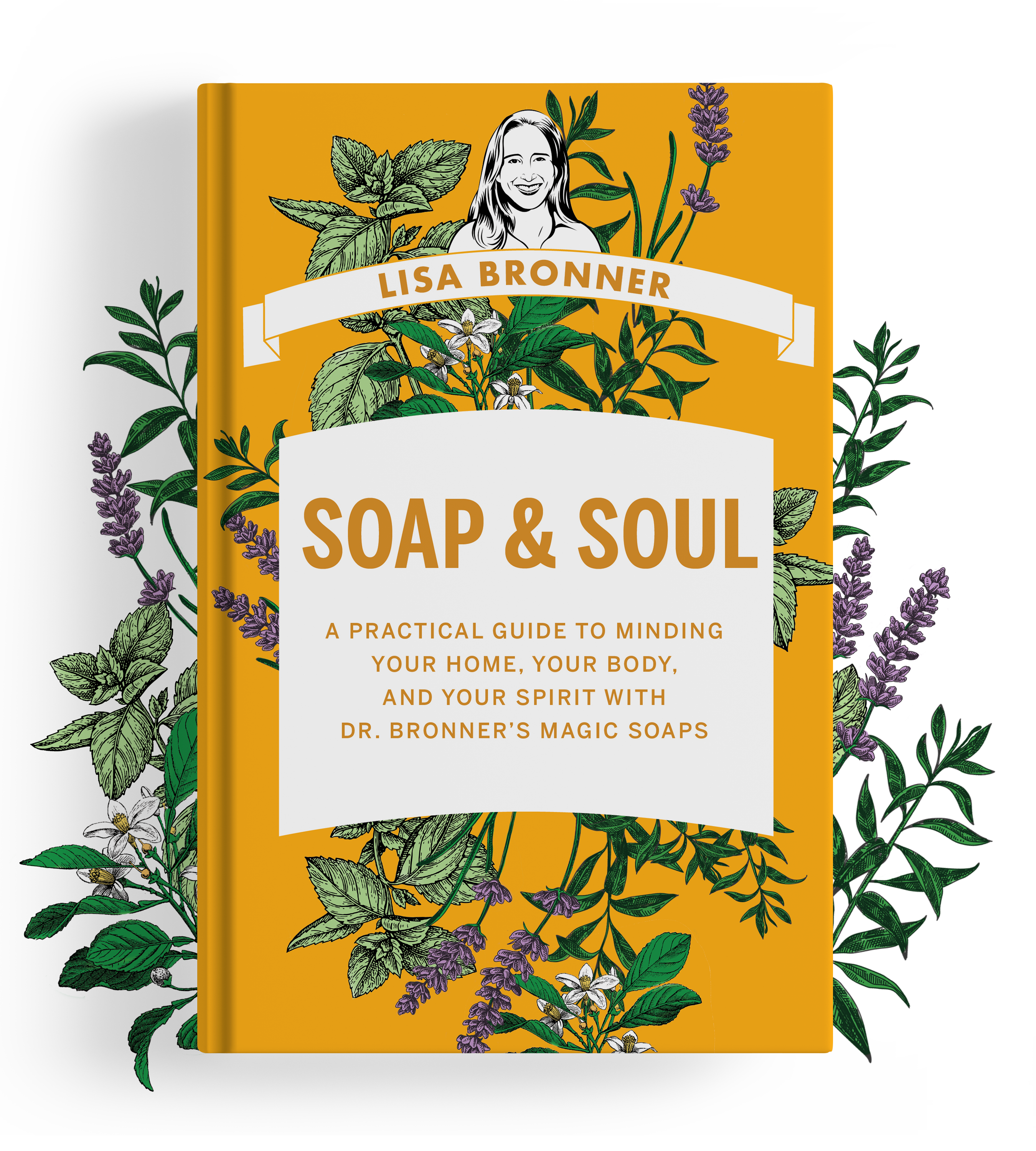
Hi, thanks for sharing these info. I am using the peppermint castile soap and is thinking of buying the sandalwood jasmine one but unlike the peppermint which states peppermint essential oil as one of its ingredients, the sandalwood jasmine one states natural sandalwood jasmine fragrance. May I know is that essential oil also? Thank you.
Hi XS- It’s great that you read labels closely and are right to be wary of the terms “fragrance.” We label some of our scents, including Sandalwood Jasmine, as fragrances because they are proprietary blends of essential oils that have been developed and customized for us by U.S. fragrance houses. The natural sandalwood-jasmine fragrance is made up of a blend of essential oils like ginger, clove, patchouli, orange, and cedar, and natural raw materials sourced from all over the world. While we do not list each of the fragrance ingredients on our labels, the formula and manufacturing process of the fragrance is verified by our organic certifier to make sure that it meets the strict requirements of the USDA’s National Organic Program and is manufactured without the use of synthetic chemicals. We just received the EWG Verified rating on the Environmental Working Group site. You can learn more about the scent profile and safety information there: https://www.ewg.org/skindeep/products/1048406-Dr_Bronners_18in1_Hemp_PureCastile_Soap_Sandalwood_Jasmine/
[…] My article, 10 Labeling Traps to Recognize in Body Care […]
[…] hear a little bit of what it was like “growing up Bronner,” as well as practical tips about product labels, green cleaning, and safety for children and […]
[…] people write short, casual entries. I never entirely got the hang of “short” and sometimes I dive a little deeper than “casual.” I still have much to […]
[…] what the front of a bottle says about itself, turn the bottle over and read the ingredient list. For help deciphering them, run the list through the Environmental Working Group’s Skin Deep […]
Thanks Lisa…
This is required reading as a consumer looking to by organic or truly natural products with no toxicity. This handles the topics from end to end & we need to consume products that don’t harms or the planet in the use or making of the product. Oneness.
Good topic/post. I especially liked 8,9 & 10. And I thought non-comedogenic meant you couldn’t laugh at it.
Ha! I like that definition!
YOU are SOOoooo right! I learned all of the above the hard way and over years of various skin rashes. Thank you for reminding us all to read, read, READ.
Great list! #7, “Organic” is a tad misleading. It is correct in that “organic” can not be listed in the brand name or in the product name without certification. Cosmetic manufacturers absolutely can (rightly so) list the word “organic” without having the round USDA organic seal on their product. The seal doesn’t prove a company is verified, it denotes the organic content is 95%+.
Example: many cosmetics are not 95% + organic content (which is required to use the round USDA organic seal) but they are “made with organic (insert ingredient here)” and might have certified 70% -94% organic content. Even with this “made with…” the company must denote which ingredients are “organic” in the ingredient section and must state which agency certified them. If the product contains less than 70% they can still correctly use the word “organic” in limited capacity.
Keep in mind water is not considered in organic certification so a water based product could be 99% ick water and 1% organic whatever, and carry the USDA organic seal. Waxes can be problematic (they are not considered a food or processing aid) so many cosmetics can not count the wax % in the organic content even if it is a “wild” plant wax. Beeswax can be organic, which is odd as so many pesticides are found in many bee by-products these days (bees don’t chose organic non-gmo flowers!)
Anyhoo, my point is, seeing the round USDA organic seal isn’t the end-all-be-all in clarifying what is a quality cosmetic product. Just always want to make that as clear as possible to anyone bothering to care about the watered down word “organic” (it’s a shame this word has not had better handlers from the start). And yes, little enforcement is seen in any industry these days and there is no USDA policing agency to enforce much of these labeling woes. Most companies get their labels “checked” with their yearly audit.
Power to the People.
Wonderful article, Lisa. In the back of my mind I knew that I had to read the ingredients; but this essay reminds me of the clever ways advertisers attempt to deceive us. Thanks for reminding us to follow the discipline: read the label!